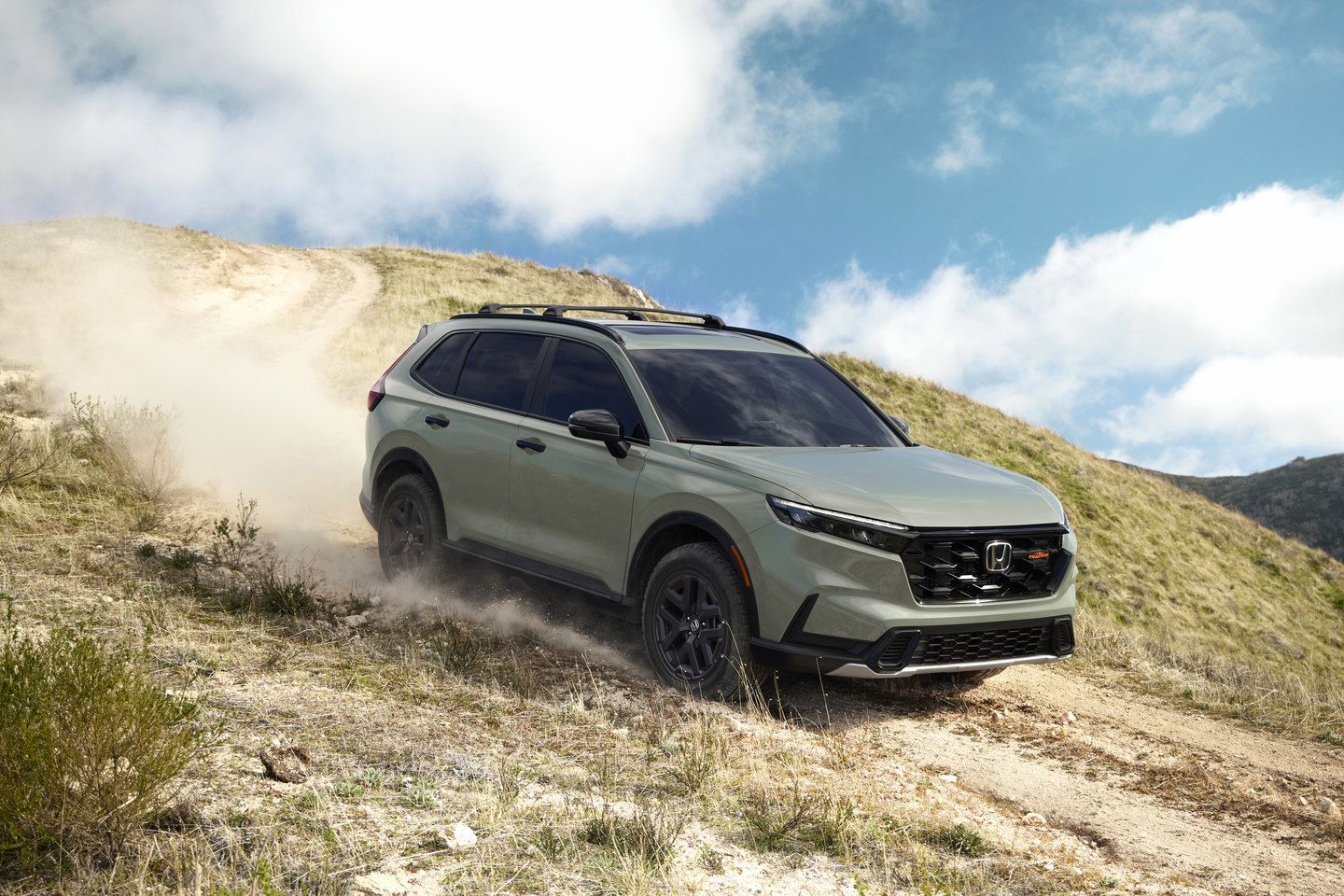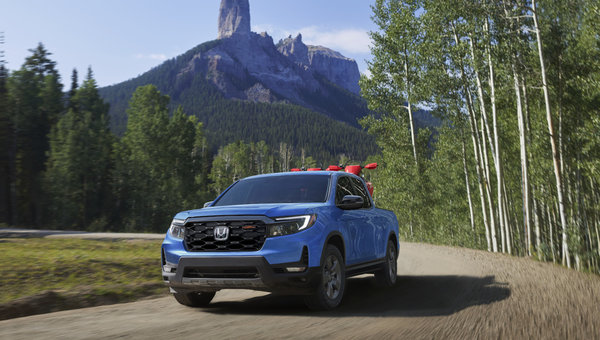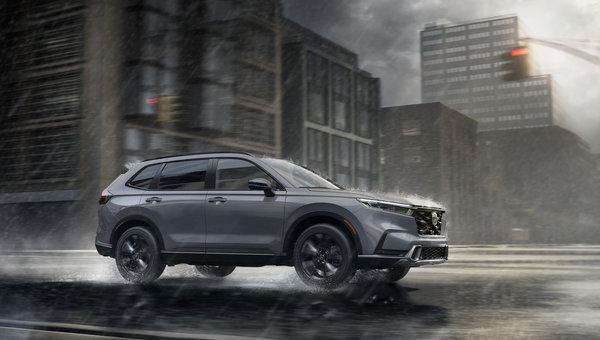2026 Honda AWD Models: Complete Guide to All-Wheel Drive and Winter Performance in Quebec
November 11 2025,

Quebec winters demand vehicles that handle snow, ice, and freezing temperatures with confidence. Honda's 2026 lineup delivers multiple all-wheel drive options across SUVs and trucks, each engineered with different systems suited to specific driving needs. From compact crossovers to three-row family haulers, understanding which models offer AWD—and how each system performs—helps drivers in Pointe-aux-Trembles choose the right vehicle for year-round capability.
Honda equips five 2026 models with all-wheel drive systems in Canada: the HR-V, CR-V, Pilot, Passport, and Ridgeline. Each uses distinct AWD technology matched to its size and purpose. Some models make AWD optional on base trims, while others include it standard across the entire lineup. Knowing the differences in availability, mechanical design, and winter-specific features clarifies which Honda fits your driving conditions.
How Honda's AWD Systems Work
Honda uses two primary all-wheel drive technologies across its 2026 lineup. The Real Time AWD with Intelligent Control System appears on HR-V and CR-V models, while the more advanced i-VTM4 torque-vectoring system equips Pilot, Passport, and Ridgeline trucks.
Real Time AWD monitors wheel slip and road conditions continuously, sending power to the rear wheels only when front-wheel traction drops. This reactive system prioritizes fuel efficiency during normal driving by operating primarily in front-wheel drive, then engages rear axle power within milliseconds during acceleration on slippery surfaces or cornering. The system works with Honda's selectable Snow drive mode, which adjusts throttle response and transmission shift points for smoother power delivery on ice and packed snow.
The i-VTM4 system takes capability further with active torque vectoring. Beyond distributing power between front and rear axles (up to 70% to the rear), i-VTM4 can send 100% of rear axle torque to either the left or right rear wheel independently. During winter cornering on slick roads, this creates a stabilizing yaw moment—a rotational force that pushes more torque to the outside rear wheel to help rotate the vehicle through turns with greater precision and less understeer. The result is more predictable handling on snow-covered curves and better control during lane changes on icy highways.
2026 Honda HR-V: Compact AWD Availability
The HR-V makes all-wheel drive available across its entire three-trim lineup, though only as an option on the base LX. Sport and EX-L trims come standard with Real Time AWD with Intelligent Control System, paired with 18-inch alloy wheels and a fully independent rear suspension that improves ride quality over rough winter roads.
HR-V AWD models use a 2.0-litre inline 4-cylinder engine producing 158 horsepower. Fuel economy sits at 9.5 L/100 km city, 7.8 L/100 km highway, and 8.7 L/100 km combined for AWD-equipped trims—a modest 0.4 L/100 km penalty versus front-wheel drive LX. Ground clearance and approach angles remain consistent in both FWD and AWD configurations, but the added rear traction proves valuable on unplowed side streets and snow-covered parking lots common in Pointe-aux-Trembles during January and February storms.
All HR-V models include Hill Descent Control and three selectable drive modes: Normal, Eco, and Snow. The Snow mode reduces throttle sensitivity and moderates transmission shifts to minimize wheel spin during cold starts and slippery acceleration. Heated front seats and a heated steering wheel are standard on Sport and EX-L trims, addressing winter comfort needs directly.
2026 Honda CR-V: Real Time AWD Across Hybrid and Gas Trims
CR-V offers Real Time AWD with Intelligent Control System as standard equipment on Sport, Sport Hybrid, EX-L Hybrid, TrailSport Hybrid, and Touring Hybrid trims. Base LX models with the 1.5-litre turbocharged engine remain front-wheel drive only, while all hybrid-powered CR-V variants include AWD from the factory.
The hybrid system pairs a 2.0-litre inline 4-cylinder engine with two electric motors for 204 horsepower combined and 247 lb-ft of torque. This powertrain delivers stronger low-end torque than the gas engine, which translates to better initial traction when pulling away from stoplights on icy roads. The electric motors provide instant torque with no lag, helping the AWD system respond faster to wheel slip before momentum is lost.
CR-V TrailSport Hybrid adds winter-focused hardware beyond standard AWD. Continental CrossContact ATR all-terrain tires (235/60R18) mounted on Shark Gray 18-inch wheels improve traction in snow, slush, and mud compared to standard all-season rubber. Enhanced traction management software optimizes power distribution for off-pavement conditions, useful for accessing cottage roads or trails that see limited winter maintenance. The TrailSport also includes Hill Descent Control, amber ambient lighting, and heated front seats with a heated steering wheel for cold-weather comfort.
CR-V AWD models include Snow drive mode as part of the standard selectable drive system. The CR-V's lower ride height compared to Pilot or Passport makes it more prone to snow buildup underneath, but ground clearance remains sufficient for typical Quebec winter driving on maintained roads.
2026 Honda Pilot: Standard i-VTM4 Torque-Vectoring AWD
The Pilot makes i-VTM4 all-wheel drive standard across every trim level sold in Canada. No front-wheel drive option exists, ensuring all buyers receive torque-vectoring capability regardless of configuration.
The i-VTM4 system distributes up to 70% of engine torque to the rear axle, then routes 100% of that rear power to either the left or right rear wheel as needed. During winter driving, this active torque vectoring stabilizes the three-row SUV through corners and improves control during evasive manoeuvres on slick surfaces. The system creates a yaw moment by overdriving the outside rear wheel in turns, effectively pulling the vehicle through the corner with more accuracy than fixed-ratio AWD systems.
Pilot includes five standard selectable drive modes: Normal, Econ, Snow, Sport, and Tow. EX-L trims and higher add Sand and Trail modes, optimizing the i-VTM4 system for loose surfaces and low-traction scenarios. Hill Descent Control is standard on all Pilot models, maintaining steady downhill speed on snow-covered inclines without constant brake modulation.
Pilot TrailSport takes winter capability further with off-road-tuned suspension that increases articulation and ground clearance. Steel skid plates protect the underbody from damage when encountering hidden obstacles beneath deep snow. All-terrain tires improve traction in snow, ice, and mud while remaining quiet on dry pavement—a balance suited to families who drive both highway commutes and weekend escapes to rural Quebec.
The Pilot's 3.5-litre V6 engine produces 285 horsepower, providing strong acceleration even with a full passenger load and winter gear. The added weight of i-VTM4 hardware results in slightly higher fuel consumption versus lighter AWD systems, but the trade-off delivers measurably better winter handling dynamics in a vehicle designed to carry up to eight occupants.
2026 Honda Passport and Ridgeline: i-VTM4 for Off-Road and Truck Use

Both Passport and Ridgeline use the same i-VTM4 torque-vectoring all-wheel drive system as Pilot, adapted for their respective missions. Passport TrailSport models (the only configuration available in Canada) come standard with upgraded suspension, increased ground clearance, and trail-specific drive modes that optimize torque distribution for rock crawling, sand, and mud—conditions that overlap with deep snow and ice performance.
Ridgeline's i-VTM4 system functions identically to Passport, distributing torque between axles and across rear wheels to improve traction during loaded towing or hauling scenarios. The truck's independent rear suspension maintains better tire contact on uneven surfaces compared to solid-axle designs, which helps when navigating rutted, snow-covered trails or icy boat ramps.
Both models include Snow mode as part of their drive mode selectors, along with Sand and Trail modes that reduce throttle aggression and allow more wheel slip before intervention—useful for self-recovery from snowbanks or unpacked snow. Hill Descent Control is standard, providing controlled descents on steep, slippery grades without brake fade.
Fuel Economy Impact of AWD Across Honda's Lineup
Adding all-wheel drive to any vehicle increases weight and drivetrain friction, which raises fuel consumption. The HR-V shows the smallest penalty: AWD models consume 0.4 L/100 km more than front-wheel drive LX across city, highway, and combined cycles. This modest increase reflects the Real Time AWD system's ability to disengage the rear axle during steady cruising, reducing parasitic drag.
CR-V hybrid models include AWD as standard equipment on Sport Hybrid and higher trims, so no direct fuel economy comparison exists between FWD and AWD hybrid variants. The base LX with front-wheel drive uses a 1.5-litre turbocharged engine rated at 190 horsepower and 179 lb-ft.
Pilot, Passport, and Ridgeline do not offer front-wheel drive configurations in Canada, eliminating any fuel economy comparison. The i-VTM4 system's added complexity and weight are factored into their baseline efficiency ratings. Drivers prioritizing maximum fuel economy should consider CR-V Hybrid or HR-V FWD, while those requiring torque-vectoring capability for winter driving or off-road use will accept the i-VTM4 system's higher consumption as a trade-off for improved traction and handling.
Honda AWD Performance in Quebec Winter Conditions
Honda's AWD systems deliver measurable advantages in specific winter conditions common to Quebec. During morning commutes on snow-covered residential streets in Pointe-aux-Trembles, Real Time AWD and i-VTM4 both prevent front-wheel spin during acceleration from stop signs, maintaining forward momentum without fishtailing. The systems react faster than driver correction, engaging rear wheels before lateral slip begins.
On highway on-ramps with patchy ice, i-VTM4's torque vectoring stabilizes body roll and reduces understeer during merging manoeuvres. The system's ability to overdrive the outside rear wheel through corners keeps the vehicle tracking predictably even when front tires encounter slick patches mid-turn. This proves especially useful on curved ramps in which speed and steering input combine to challenge single-axle traction.
Unplowed parking lots and cottage access roads benefit from AWD's ability to distribute power across all four wheels simultaneously. When one or two wheels encounter deep snow or ice while others grip bare pavement, the systems shift torque to wheels with traction, preventing the vehicle from becoming stuck. Hill Descent Control in all AWD-equipped models maintains steady downhill speed on snow-covered slopes, reducing brake wear and preventing skidding during descents.
Emergency lane changes on icy highways demonstrate i-VTM4's advantage over simpler AWD designs. The torque-vectoring system's ability to push power to specific rear wheels creates a stabilizing force during sudden steering inputs, helping the driver maintain control without overcorrection. Real Time AWD provides similar benefits at a smaller scale, though without the same level of active rear-wheel torque distribution.
Key Takeaways: Honda AWD by Model
|
Model |
AWD Availability |
System Type |
Standard or Optional |
|
HR-V LX |
Available |
Real Time AWD with Intelligent Control |
Optional |
|
HR-V Sport / EX-L |
Included |
Real Time AWD with Intelligent Control |
Standard |
|
CR-V LX |
Not Available |
N/A |
N/A |
|
CR-V Sport |
Included |
Real Time AWD with Intelligent Control |
Standard |
|
CR-V Hybrid (all trims) |
Included |
Real Time AWD with Intelligent Control |
Standard |
|
Pilot (all trims) |
Included |
i-VTM4 Torque-Vectoring AWD |
Standard |
|
Passport TrailSport |
Included |
i-VTM4 Torque-Vectoring AWD |
Standard |
|
Ridgeline |
Included |
i-VTM4 Torque-Vectoring AWD |
Standard |
Experience Honda's AWD Systems at Lallier Honda PAT
Understanding AWD specifications on paper provides useful context, but experiencing how these systems respond to real winter conditions clarifies their practical value. Test driving CR-V Hybrid, Pilot, or HR-V on snow-covered roads in Pointe-aux-Trembles demonstrates the difference between reactive and torque-vectoring AWD. Visit Lallier Honda PAT to explore which all-wheel drive system matches your winter driving needs.



